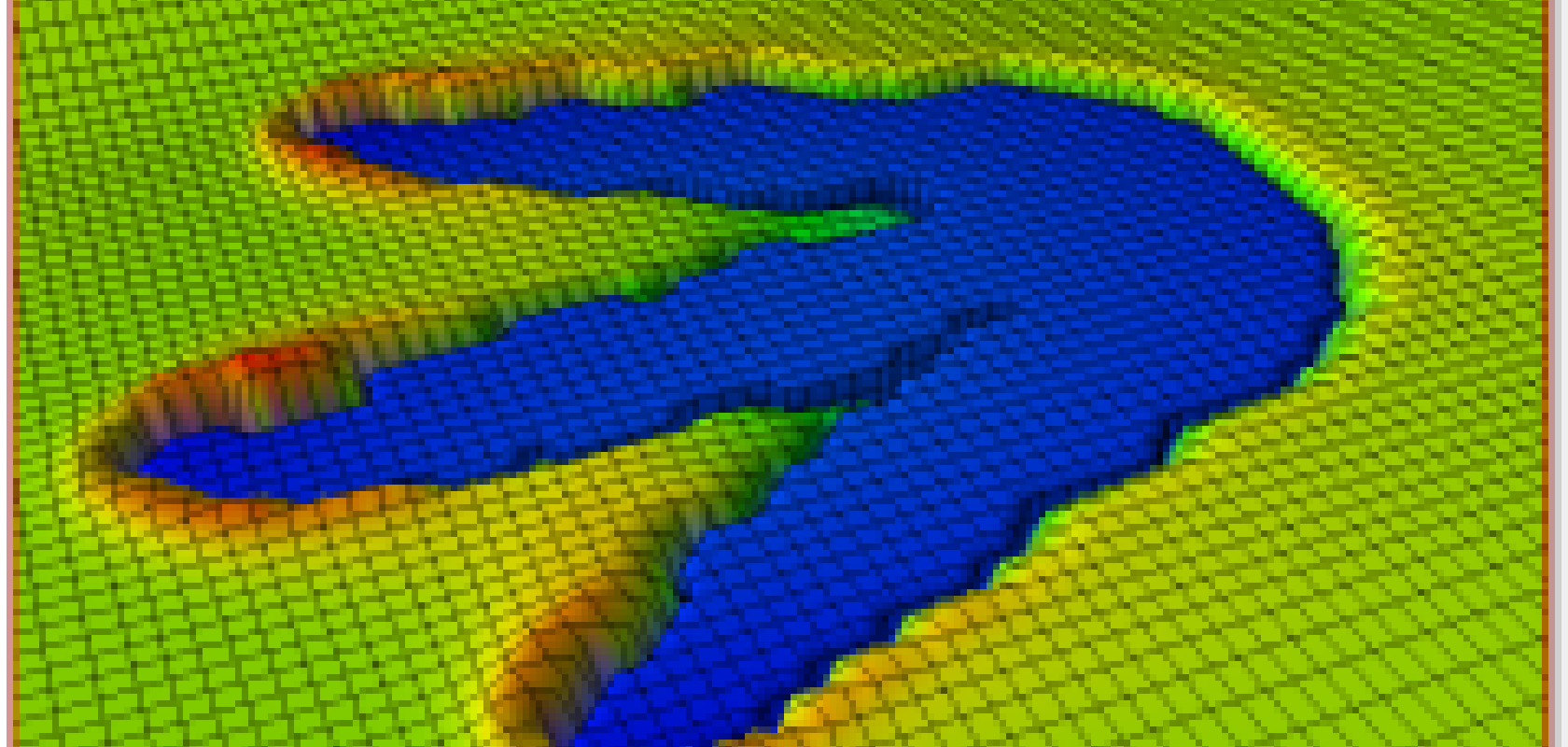Terrain thought to be inhabited by only the largest dinosaurs could have in fact been home to dozens of other creatures, according to research from the University of Manchester. Computer modelling of how dinosaurs made tracks has revealed that lasting footprints were only created if the soil conditions were perfect to do so – and entirely depending on the animal’s weight. This has enabled scientists for the first time to run dozens of simulations to change systematically the conditions of the mud.
Peter Falkingham, from Manchester University’s school of Earth, Atmospheric and Environmental Sciences, led the team that incorporated scientists from a range of disciplines, including vertebrate palaeontologist Phil Manning and geotechnical engineer Lee Margetts, both from the University of Manchester, and biomechanicist Karl Bates (University of Liverpool).
Dubbed the ‘Goldilocks Effect’ – as all conditions have to be ‘just right’ for a print to be created – this work could help bring ancient environments to life by showing how many animals can walk over an area, while only a few leave tracks behind. The findings, published in the January 2011 online edition of Interface, the journal of the Royal Society, mean that significant dinosaur track sites, such as Paluxy River in Texas, USA, or Fumanya, Spain, could have been host to many more dinosaurs and other animals than the tracks themselves show.
Speaking to Scientific Computing World, Falkingham explained that they used the engineering method known as finite element analysis to simulate stress distributions in a material under load. This was applied to dinosaur tracks to model the mud underneath the animal’s feet. ‘The advantage of computer simulation is that it is much easier to model the tracks of a 30-tonne animal. Scientists have been doing physical experiments for hundreds of years, but as there is no animal alive today like a dinosaur, it’s incredibly difficult to approximate the tracks that would be made. Simulation, however, allows us to do the things we could never do physically,’ he said.
Due to the non-linear nature of mud, it is difficult to model as it will not behave in the same way as metal, for example, when a load is applied. The team therefore needed high-resolution meshes and very small finite elements in order to see the shape of the track, and have control over it, and so ran most of the simulations on the UK supercomputer HECToR. Designed by one of the authors of the study, Lee Margetts, ParaFEM software was deployed.
As dinosaurs varied considerably in weight, from Brachiosaurus, weighing around 30 tonnes, to Compsognathus, which was the size and weight of a chicken, Falkingham found that the heaviest creatures would leave prints only in certain mud conditions. Equally, in other areas where the mud was deep and soft, only lighter, nimbler dinosaurs would be able to walk over it and therefore leave prints; larger animals would become stuck and die.
In Paluxy River, site of one of the most famous sets of dinosaur footprints which seem to show a Sauropod being chased by a carnivorous Theropod, there are only footprints recording large dinosaurs. But the computer simulations suggest that many more species probably lived there, walking over the same mud, but their footprints either made no impression or have disappeared over time.
The second half of the published paper, ‘The 'Goldilocks' effect: preservation bias in vertebrate track assemblages’, examines the shape of the prints. The computer models revealed ridges within the tracks themselves and, as Falkingham pointed out: ‘If you saw that in the field, in a human footprint for example, you would assume it had arisen due to high pressure under the heel and toes, and not under the middle of the foot, but that wasn’t the case in our simulations. The joy of computational methods is that we have control over everything, so we used flat feet and loaded them vertically, but we still found some of these structures within the tracks.’
He concluded by warning that researchers will have to be more careful about the assumptions they make when interpreting dinosaur prints out in the field. These insights give palaeontologists the chance to re-evaluate ecosystems that existed more than 100 million years ago.


